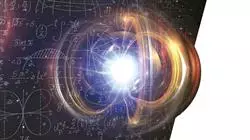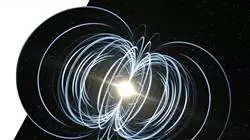University certificate
The world's largest faculty of engineering”
Introduction to the Program
A university program designed for people who wish to balance their professional responsibilities with a quality education”

The development of Quantum Sciences will mean a breakthrough for human beings in practically all productive sectors. Thus, work is already underway to create quantum computers that allow transmitting information at higher speeds and in a secure manner. However, the potential of quantum computing goes beyond this, and its applications can be reflected in transportation management, in the creation of batteries with higher energy density, or in the creation of materials with a better strength-to-weight ratio.
Engineering professionals are faced here with a challenge and a range of possibilities for innovation and progress of possibilities for innovation and the advancement of today's Industry 4.0: a favorable scenario for progress in a booming field, where companies are increasingly demanding highly qualified personnel. For this reason, TECH offers this Postgraduate diploma in Quantum Sciences, where in just 6 months the students will obtain the necessary learning to progress in their careers.
A 100% online program, where students can delve into the main essential mathematical methods, to later delve more easily into quantum field theory and quantum computation. In addition, the multimedia teaching resources will provide greater dynamism to the content and facilitate the acquisition of knowledge.
Thus, the engineering professionals can obtain a university qualification that is at the cutting edge, and which can be accessed easily, whenever and wherever they wish. The students only require a computer, tablet or cell phone with Internet connection to be able to access, at any time, the syllabus hosted on the virtual platform. Also, the Relearning method, will allow you to progress through this Postgraduate diploma in a much more agile way and reduce the long hours of study.
This is an excellent opportunity to advance in your professional career thanks to this Postgraduate diploma in Quantum Sciences. Enroll now”
This Postgraduate diploma in Quantum Sciences contains the most complete and up-to-date program on the market. The most important features include:
- Practical case studies are presented by experts in Physics
- The graphic, schematic, and practical contents with which they are created, provide scientific and practical information on the disciplines that are essential for professional practice
- Practical exercises where the self-assessment process can be carried out to improve learning
- Its special emphasis on innovative methodologies
- Theoretical lessons, questions to the expert, debate forums on controversial topics, and individual reflection assignments
- Content that is accessible from any fixed or portable device with an Internet connection
Enroll now in a university program that you can easily access from your computer or tablet with Internet connection"
The program includes, in its teaching staff, professionals from the sector who bring to this program the experience of their work, in addition to recognized specialists from prestigious reference societies and universities.
Its multimedia content, developed with the latest educational technology, will allow professionals to learn in professionals a situated and contextual learning, i.e., a simulated environment that will provide immersive education programmed to prepare in real situations.
The design of this program focuses on Problem-Based Learning, by means of which professionals must try to solve the different professional practice situations that arise during the academic course. For this purpose, students will be assisted by an innovative interactive video system developed by renowned experts.
Video summaries, detailed videos or essential readings will allow you to go deeper into the Klein-Gordon and Dirac theories"

Access the most relevant information on quantum theory of light-matter interaction at any time"
Why study at TECH?
TECH is the world’s largest online university. With an impressive catalog of more than 14,000 university programs available in 11 languages, it is positioned as a leader in employability, with a 99% job placement rate. In addition, it relies on an enormous faculty of more than 6,000 professors of the highest international renown.

Study at the world's largest online university and guarantee your professional success. The future starts at TECH”
The world’s best online university according to FORBES
The prestigious Forbes magazine, specialized in business and finance, has highlighted TECH as “the world's best online university” This is what they have recently stated in an article in their digital edition in which they echo the success story of this institution, “thanks to the academic offer it provides, the selection of its teaching staff, and an innovative learning method aimed at educating the professionals of the future”
A revolutionary study method, a cutting-edge faculty and a practical focus: the key to TECH's success.
The most complete study plans on the university scene
TECH offers the most complete study plans on the university scene, with syllabuses that cover fundamental concepts and, at the same time, the main scientific advances in their specific scientific areas. In addition, these programs are continuously being updated to guarantee students the academic vanguard and the most in-demand professional skills. In this way, the university's qualifications provide its graduates with a significant advantage to propel their careers to success.
TECH offers the most comprehensive and intensive study plans on the current university scene.
A world-class teaching staff
TECH's teaching staff is made up of more than 6,000 professors with the highest international recognition. Professors, researchers and top executives of multinational companies, including Isaiah Covington, performance coach of the Boston Celtics; Magda Romanska, principal investigator at Harvard MetaLAB; Ignacio Wistumba, chairman of the department of translational molecular pathology at MD Anderson Cancer Center; and D.W. Pine, creative director of TIME magazine, among others.
Internationally renowned experts, specialized in different branches of Health, Technology, Communication and Business, form part of the TECH faculty.
A unique learning method
TECH is the first university to use Relearning in all its programs. It is the best online learning methodology, accredited with international teaching quality certifications, provided by prestigious educational agencies. In addition, this disruptive educational model is complemented with the “Case Method”, thereby setting up a unique online teaching strategy. Innovative teaching resources are also implemented, including detailed videos, infographics and interactive summaries.
TECH combines Relearning and the Case Method in all its university programs to guarantee excellent theoretical and practical learning, studying whenever and wherever you want.
The world's largest online university
TECH is the world’s largest online university. We are the largest educational institution, with the best and widest online educational catalog, one hundred percent online and covering the vast majority of areas of knowledge. We offer a large selection of our own degrees and accredited online undergraduate and postgraduate degrees. In total, more than 14,000 university degrees, in eleven different languages, make us the largest educational largest in the world.
TECH has the world's most extensive catalog of academic and official programs, available in more than 11 languages.
Google Premier Partner
The American technology giant has awarded TECH the Google Google Premier Partner badge. This award, which is only available to 3% of the world's companies, highlights the efficient, flexible and tailored experience that this university provides to students. The recognition as a Google Premier Partner not only accredits the maximum rigor, performance and investment in TECH's digital infrastructures, but also places this university as one of the world's leading technology companies.
Google has positioned TECH in the top 3% of the world's most important technology companies by awarding it its Google Premier Partner badge.
The official online university of the NBA
TECH is the official online university of the NBA. Thanks to our agreement with the biggest league in basketball, we offer our students exclusive university programs, as well as a wide variety of educational resources focused on the business of the league and other areas of the sports industry. Each program is made up of a uniquely designed syllabus and features exceptional guest hosts: professionals with a distinguished sports background who will offer their expertise on the most relevant topics.
TECH has been selected by the NBA, the world's top basketball league, as its official online university.
The top-rated university by its students
Students have positioned TECH as the world's top-rated university on the main review websites, with a highest rating of 4.9 out of 5, obtained from more than 1,000 reviews. These results consolidate TECH as the benchmark university institution at an international level, reflecting the excellence and positive impact of its educational model.” reflecting the excellence and positive impact of its educational model.”
TECH is the world’s top-rated university by its students.
Leaders in employability
TECH has managed to become the leading university in employability. 99% of its students obtain jobs in the academic field they have studied, within one year of completing any of the university's programs. A similar number achieve immediate career enhancement. All this thanks to a study methodology that bases its effectiveness on the acquisition of practical skills, which are absolutely necessary for professional development.
99% of TECH graduates find a job within a year of completing their studies.
Postgraduate Diploma in Quantum Sciences
Progress in Quantum Sciences will have a significant impact on most productive sectors, such as the creation of quantum computers that transmit information faster and more securely. In addition, quantum computing has applications in transportation management, the creation of batteries with higher energy density and the production of stronger and lighter materials. Engineers have a great challenge and opportunities for innovation in Industry 4.0, which is why TECH has opted to offer the Postgraduate Diploma in Quantum Sciences, which will provide you with the necessary skills in this field to advance your professional career in just 6 months.
Develop in the field of Quantum Sciences if schedules
The Postgraduate Diploma in Quantum Sciences will allow you to delve into mathematical methods, quantum field theory and the intricacies of quantum computing in a 100% online mode and from any device with an Internet connection. These academic facilities, together with the excellent teaching materials provided by TECH in this Postgraduate Diploma, will guarantee a complete learning experience adapted to your student and personal needs.







